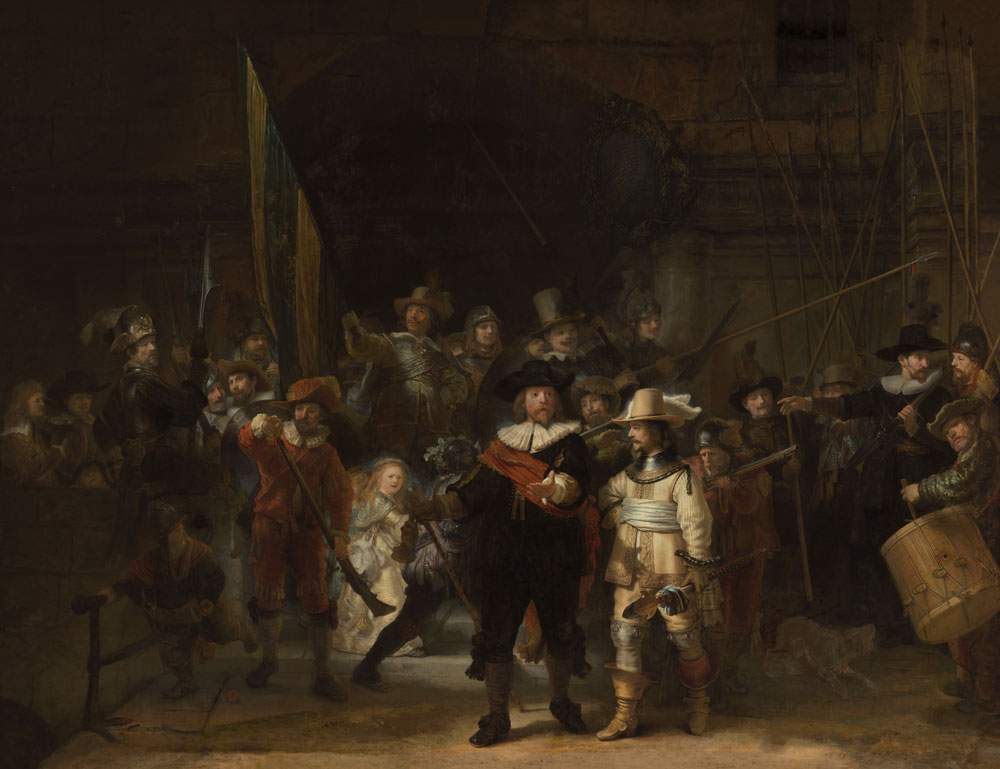For the first time in more than three hundred years, the Night Watch, a Rembrandt masterpiece housed at the Rijksmuseum in Amsterdam, has returned to public view in its entirety, thanks to a complex restoration project launched in 2019, titled Operation Night Watch, and involving many experts. Indeed, the work had several missing pieces, which were reconstructed thanks to state-of-the-art technology andartificial intelligence. Thus, visitors now have the opportunity to see what the work, created by the Dutch painter in 1642 on the commission of Captain Frans Banning Cocq, originally looked like.
The missing pieces were reconstructed based on a 17th-century copy attributed to Gerrit Lundens and temporarily mounted on Rembrandt’s work. The complete painting will remain on display for the next few months, and for those who cannot see the painting on site, a special section has been created on the museum’s website accompanied by additional information for admiring the reconstruction.
There are some differences between the best-known version of the Night Watch and the original painting: for example, in the reconstructed version, three figures on a bridge are seen on the left, and the main figures, namely Captain Frans Banninck Cocq and Lieutenant Willem van Ruytenburch, are now placed on the right, instead of in the center of the canvas. The missing elements have given the painting a greater sense of movement and dynamism: the boy in the left foreground is grasping a balustrade and has also gained space in which to move, to escape the militiamen.
On the occasion of the reconstruction of The Night Watch, the most extensive art-historical research project ever conducted on Rembrandt’s masterpiece was carried out.
The painting had been commissioned to be placed in the banquet hall of the militia headquarters, and in addition to this there were six other portraits of militia members hanging here; in 1715 the painting was later moved to the building that then housed Amsterdam’s city hall: too large for its new location, it was reduced in sizeby cutting off entire strips on the four sides that were never found again. In particular, the left side was the largest removed section (64.4 cm), the other strips ranging from 7 to 23 centimeters.
Various images can be enlarged on the Rijksmuseum website to delve into the parts of the famous painting, and there is also a video available that tells how the reconstruction was accomplished.
Pictured is the reconstructed version of the Night Watch with the missing parts. Ph.Credit Rijksmuseum
 |
| Reconstruction of the Night Watch completed: this is what Rembrandt's original version looked like |
Warning: the translation into English of the original Italian article was created using automatic tools. We undertake to review all articles, but we do not guarantee the total absence of inaccuracies in the translation due to the program. You can find the original by clicking on the ITA button. If you find any mistake,please contact us.